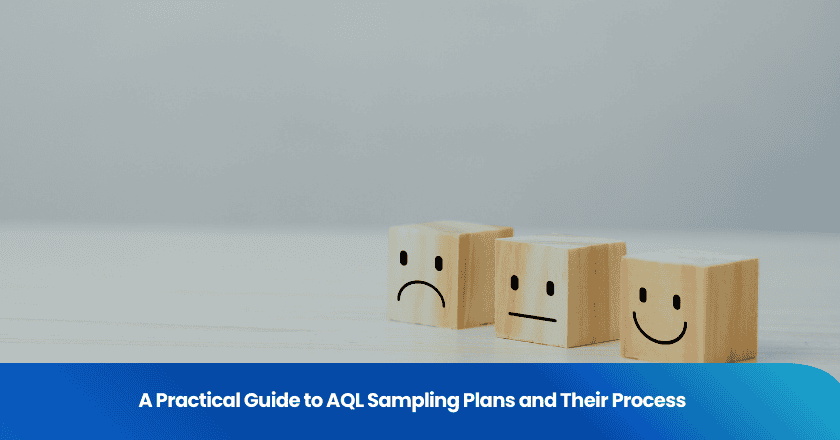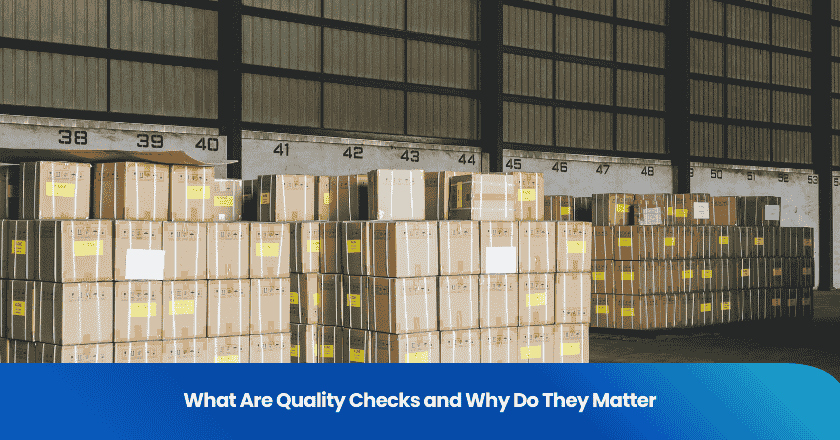
You use a quality aql sampling plan to determine whether a batch meets your standards during product inspection. This plan sets clear criteria, so you can decide if defects fall within the acceptable quality level or exceed the acceptable quality limit. When you follow a quality aql sampling plan, you select samples, inspect them, and make objective decisions. A quality aql sampling plan gives you a systematic approach for every product inspection. You rely on this plan to maintain consistent results and ensure quality aql sampling plan standards guide every decision.
Key Takeaways
- Classify defects as critical, major, or minor before inspection to make clear and consistent decisions.
- Set your acceptable quality level and acceptance quality limit to define how many defects you can allow in a batch.
- Use AQL tables or calculators to determine sample size and acceptance criteria based on your lot size and inspection level.
- Perform random sampling to avoid bias and ensure your inspection results represent the whole batch.
- Follow documented criteria and regularly review your sampling plans to maintain reliable quality control and improve inspection outcomes.
Defect Types
Critical, Major, Minor
You need to classify defects before you start any inspection. You will encounter three main defect types: critical, major, and minor. Each type affects your decision at the inspection stage.
- Critical defects pose safety risks or violate regulations. You must reject any batch with even one critical defect.
- Major defects impact the product’s function or appearance. These defects do not threaten safety, but they make the product unacceptable for your customer.
- Minor defects do not affect function or safety. They may cause slight dissatisfaction, but you can accept a limited number within the aql threshold.
Tip: Always define defect types clearly in your inspection checklist. This step helps you maintain consistency and avoid confusion during product evaluation.
Here is a simple table to help you distinguish defect types:
| Defect Type | Description | Impact on Batch Decision |
|---|---|---|
| Critical | Safety risk or legal violation | Immediate rejection |
| Major | Function or appearance issue | Limited acceptance |
| Minor | Cosmetic or slight dissatisfaction | Acceptable within aql threshold |
Impact on Acceptable Quality Level
You set your acceptable quality level based on the severity and frequency of defects. The aql threshold guides you in deciding how many defects you can accept in a sample. If you find defects that exceed the aql threshold, you must reject the batch.
You should adjust your acceptable quality level for each defect type. For example, you set the aql threshold for critical defects at zero. For major defects, you may allow a small percentage. For minor defects, you can accept a higher number, as long as it stays within the acceptable quality level.
You use the aql threshold to make objective decisions. This process ensures you maintain product quality and meet customer expectations. When you apply these standards, you create a reliable inspection process that supports your quality goals.
AQL Levels
Acceptable Quality Level (AQL)
You set the acceptable quality level to define how many defects you can allow in a batch. This value acts as your benchmark during inspections. The acceptable quality level helps you decide if a product meets your requirements or needs further review. You choose the acceptable quality level based on your customer’s expectations, the product’s purpose, and industry standards. The aql standard guides you in selecting the right threshold for each inspection. You may use different acceptable quality levels for critical, major, and minor defects. For example, you set a lower acceptable quality level for major defects and a higher one for minor defects.
Note: Always document your acceptable quality level before starting any inspection. This step ensures consistency and transparency in your quality control process.
Acceptance Quality Limit
You use the acceptance quality limit to determine the maximum number of defects you can accept in a sample. The acceptance quality limit works alongside the acceptable quality level to help you make objective decisions. If the number of defects in your sample exceeds the acceptance quality limit, you must reject the batch. The acceptance quality limit provides a clear cutoff point, so you avoid subjective judgments. You rely on the acceptance quality limit to maintain product quality and meet regulatory requirements.
Here is a simple table to illustrate the relationship:
| Term | Purpose |
|---|---|
| acceptable quality level | Sets defect threshold for inspection |
| acceptance quality limit | Defines maximum defects allowed in a sample |
Sampling Levels
You select sampling levels to determine how many units you inspect from each batch. The aql standard offers several sampling levels, such as single, double, or multiple sampling. You choose a sampling level based on your lot size, risk tolerance, and inspection resources. Higher sampling levels increase accuracy but require more time and effort. Lower sampling levels speed up the process but may miss some defects. You balance these factors to create an effective inspection plan. Sampling levels work with the acceptable quality level and acceptable quality limit to ensure reliable results.
Tip: Review your sampling levels regularly. Adjust them as your production volume or quality requirements change.
Sampling Process
Lot Size and Sample Size
You start the sampling process by identifying your lot size. Lot size refers to the total number of units in the batch you want to inspect. You must know this number before you proceed. Once you have your lot size, you determine your sample size. The sample size tells you how many units you need to check during random sample inspection.
You select your sample size based on the lot size and the chosen sampling methods. Most quality professionals use an aql table to find the correct sample size. The aql table matches your lot size with the inspection level and gives you the exact number of units to inspect. For example, if your lot size is 1,200 units and you select General Inspection Level II, the aql table might tell you to inspect 80 units.
Tip: Always use random sample inspection to avoid bias. Mix the entire lot and select units at random. This step ensures your results represent the whole batch.
Acceptance Criteria
After you select your sample, you need to set clear acceptance criteria. Acceptance criteria define the maximum number of defects you can allow in your sample before you reject the batch. You base these criteria on your acceptable quality level and the defect types you identified earlier.
You use the aql table to find the acceptance and rejection points for your sample size. For example, if your sample size is 80 and your acceptable quality level for major defects is 2.5, the aql table might show that you can accept up to 5 major defects. If you find 6 or more, you must reject the batch.
Note: Always document your acceptance criteria before you begin the inspection. This practice helps you maintain objectivity and consistency.
Using AQL Tables
You rely on the aql table throughout the sampling process. The aql table helps you determine your sample size, acceptance number, and rejection number. You follow these steps to use the aql table effectively:
1. Find your lot size in the left column of the aql table.
2. Select your inspection level (such as General Level II).
3. Move across the row to find your sample size code letter.
4. Use the code letter to look up the sample size and acceptance/rejection numbers for your chosen acceptable quality level.
You can also use an aql calculator if you want a faster way to get these numbers. Many quality professionals use aql calculators for quick calculations, especially when they need to check multiple lots in a short time.
Tip: Always double-check your entries in the aql table or aql calculator. Mistakes in sample size or acceptance numbers can lead to incorrect decisions.
You should use random sample inspection for every batch. This approach ensures your sampling inspection plans remain unbiased and reliable. You can choose from different sampling methods, such as single, double, or multiple sampling, depending on your resources and risk tolerance. Each method has its own process, but the aql table remains your main tool for decision-making.
Here is a simple checklist for your sampling process:
- Identify lot size.
- Select sampling methods and inspection level.
- Use the aql table to determine sample size.
- Perform random sample inspection.
- Inspect units and record defects.
- Refer to the aql table for acceptance criteria.
- Make your accept/reject decision.
Remember: Consistency in following your sampling inspection plans leads to better quality control and fewer surprises during audits.
Application in AQL Inspections
Real-World Scenarios
You encounter aql inspections in many industries. You might work in electronics, textiles, or consumer goods. During product inspection, you select a random sample from a batch. You use the aql table to decide how many units to inspect. For example, you receive a shipment of 2,000 units. You choose General Inspection Level II and find your sample size in the table. You inspect the selected units for critical, major, and minor defects. If the number of defects stays within the acceptable quality level, you accept the batch. If defects exceed the acceptance quality limit, you reject the batch.
You often see aql inspections used before shipping products to customers. You want to avoid returns and complaints. You also use aql inspections during incoming product inspection to check supplier quality. You rely on the process to make quick decisions and maintain consistent standards.
Tip: Document each step of your product inspection. This record helps you track trends and improve future aql inspections.
Common Challenges
You face several challenges when you conduct aql inspections. You must choose the right sampling method for each batch. If you select too few units, you risk missing defects. If you inspect too many, you waste time and resources. You need to balance accuracy and efficiency.
You may struggle with interpreting borderline results. Sometimes, the number of defects is close to the acceptance quality limit. You must follow your documented criteria to avoid subjective decisions. You also need to train your team to identify defects consistently during product inspection.
You should consider the limitations of aql inspections. The process does not guarantee zero defects in every batch. You use aql inspections to control risk, not eliminate it. You must review your sampling levels and adjust them as your production changes.
| Challenge | Solution |
|---|---|
| Choosing sample size | Use aql table and guidelines |
| Borderline results | Follow documented criteria |
| Team consistency | Provide training |
Note: Regularly review your aql inspections process. Update your sampling method and criteria as your quality goals evolve.
You improve product inspections when you use a quality AQL sampling plan. You set clear standards for defect types and apply best practices for determining acceptable quality level and acceptance quality limit. You follow each step in the sampling process and use aql inspections to make objective decisions.
- Review defect classifications before every inspection.
- Use AQL tables to guide your acceptance criteria.
Consistent aql inspections help you maintain reliable quality control and build trust in your inspection results.
FAQ
What does AQL stand for?
AQL stands for Acceptable Quality Level. You use this term to define the maximum number of defects you can accept in a sample during product inspection.
How do you choose the right sample size?
You select your sample size by checking your lot size and inspection level in the AQL table. This step ensures your sample represents the entire batch.
Can you use AQL for every product type?
You can apply AQL sampling to most products. You should adjust your defect definitions and acceptable quality levels based on your industry and customer requirements.
What happens if your sample fails the AQL inspection?
If your sample exceeds the allowed defect number, you must reject the batch. You may need to rework, sort, or return the products to your supplier.
Why is random sampling important in AQL inspections?
Random sampling prevents bias. You ensure every unit has an equal chance of selection, which makes your inspection results accurate and reliable.
Grow your business with TradeAider Service
Click the button below to directly enter the TradeAider Service System. The simple steps from booking and payment to receiving reports are easy to operate.



